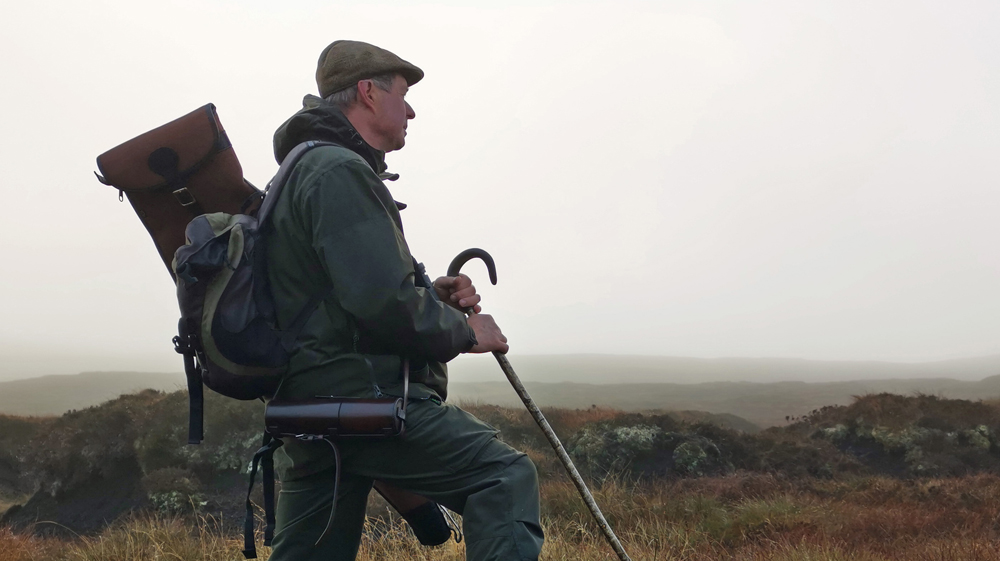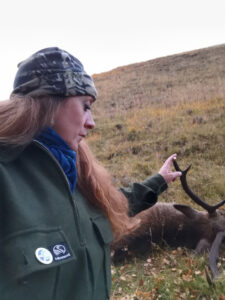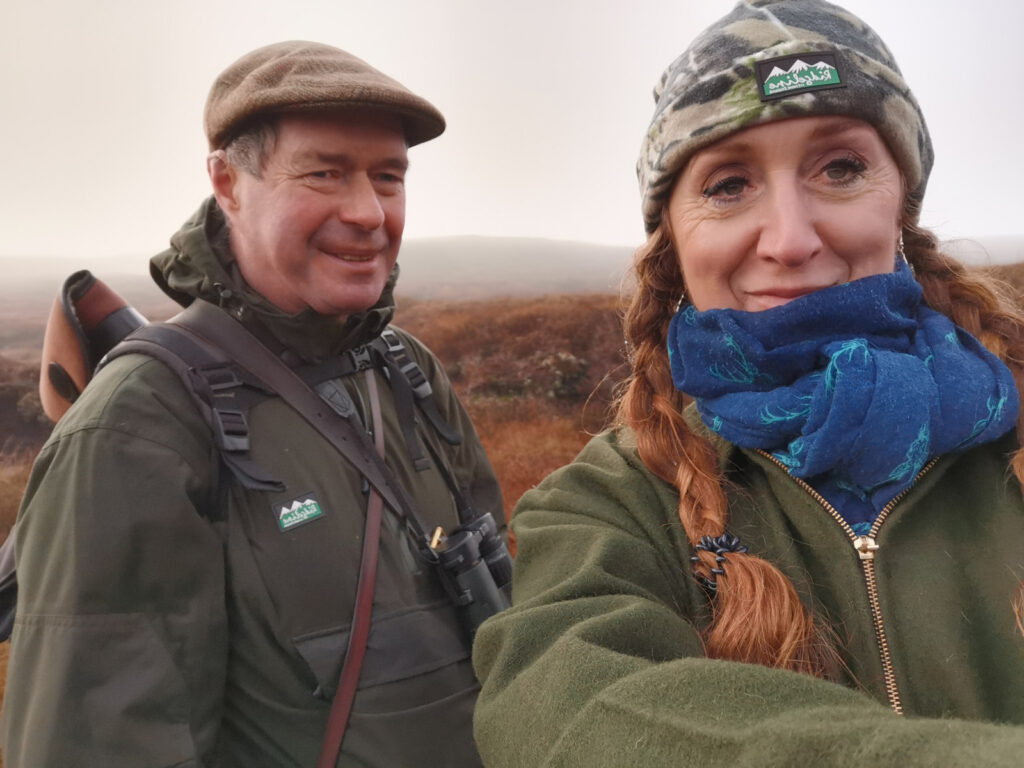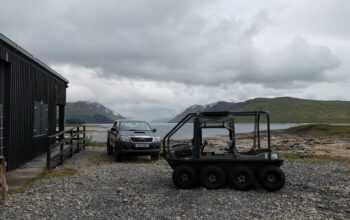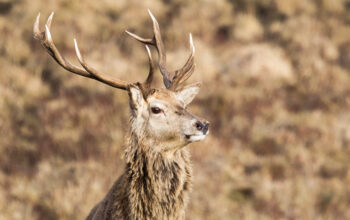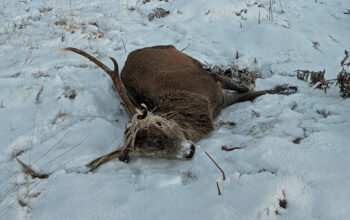Part 2
Stag stalking in remote Scotland, part 2. The continuation of stalking the final cull stag of the season. However the late October weather had presented a challenge with thick, rolling mist. You can read part one here…
“Of course, it was the right choice to make, safety on the hills comes before anything else but disappointing never the less. “We’ll try again tomorrow.” My consolation prize.
There’s always tomorrow
The following day we studied the weather closely. It hadn’t changed much but we agreed it was worth making the effort to go out once again, but we would stay on the lower ground. Stags roared as we headed out from the house just before dawn. They were closer to the house and this time we were on foot. We walked up from Loch Ericht using the steep-sided burn, Allt an Sgailean, for cover to approach Coire Bhuirich where stags had been heard. We watched a few of them through the binoculars as they roared back and forth. The mist still hung from the high tops. Morning rain and low cloud were on the forecast, so our time was limited before the lower ground disappeared under a grey blanket of cloud and rain.
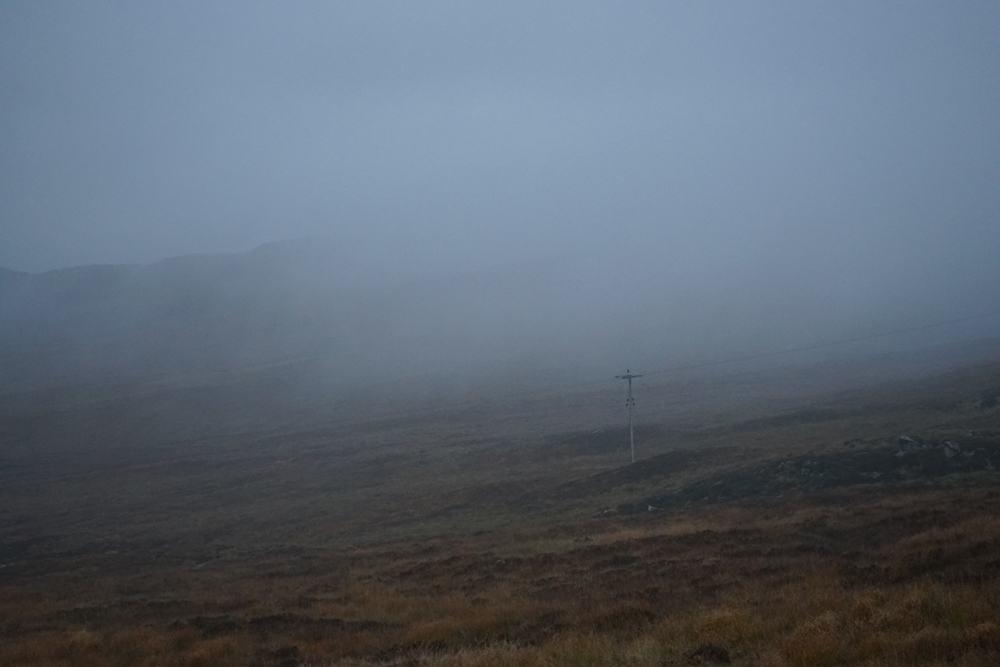
Roaring rutting stags
We crossed the track at the bridge. Suddenly, the roaring grew much louder. It wasn’t from the stags we had spied. We cautiously walked towards the source of the roars, and it moved closer to us. The distance between us reduced very quickly. The steep sides of the burn followed the weave of the water, and birch trees grew close to the edge, so our view ahead was reduced. We kept low, in single file, as we followed an old, narrow animal track closer to the source of the roar. My senses were on high alert: eyes wide looking for movement, ears straining to pick out different sounds. By now, the only communication between Richard and I was hand signals.
The stag was close
The earlier soft dawn glow had quickly changed to a brighter morning light, as we walked over the rocky slope close to the burn. A loud roar stopped us, we immediately crouched down behind a grassy, heathery knoll. He roared again. We looked through the binoculars to see a stag appear on our horizon moving his small group of hinds across the rocky and grassy ground.
This was it!
As the hinds stopped to eat the grass on the steep bank, the stag stood still, and scanned the area for other stags that may challenge him and take away his hinds. His bold stance gave us an opportunity to study him. The stag had a small body, and no belly: thin from chasing during the rut and looked an older beast, past his prime. All these factors were taken into consideration, and this made him a perfect cull stag. The steep sided slopes provided a natural backstop, and our position was ideal to shoot from.
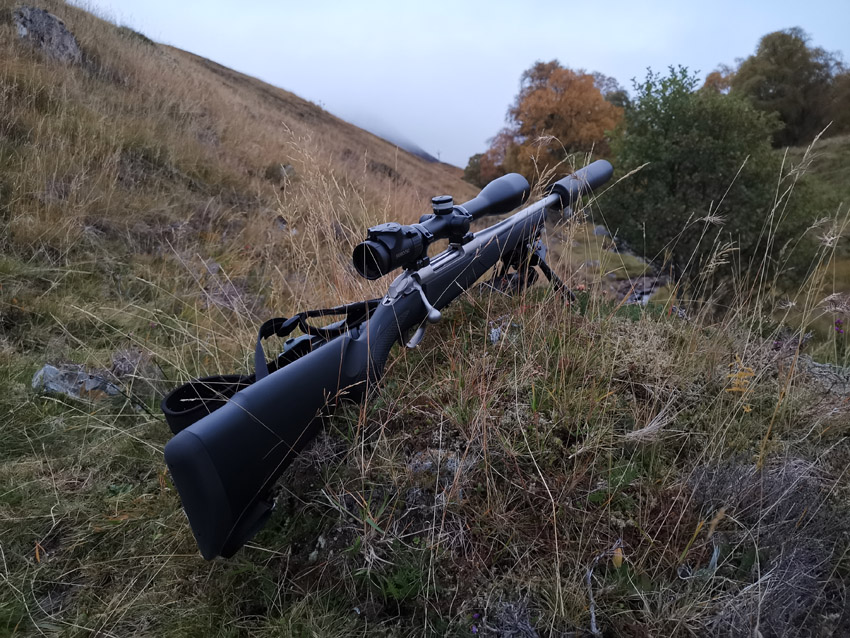
Taking the shot
I settled into the heather and long grass with the Sako.270, shooting prone, and watched him through the scope as he moved the hinds lower down. Richard said, ‘take the shot when you are ready.’ I pushed the safety catch forward, and the rifle was ready to fire. I steadied my breathing, as I continued to watch him through the rifle scope. Within a few moments, he roared then turned broadside. I took a deep breath, exhaled then held my breath. As I did I smoothly squeezed the trigger, and took the shot. He tumbled down the slope and landed by the burn. The hinds moved away out of sight without a backward glance.
My first and last cull stag in Corrievarkie
We watched through the binoculars, the stag lay still close the burn on a bed of fallen birch leaves, grass, and heather: a beautiful last resting place. I conducted a personal ritual to acknowledge and express my gratitude for the stag’s long life, running wild and free in the hills of Corrievarkie. As I sat next to him, I felt the heat leave his body, and gave him his last bite of purple heather.
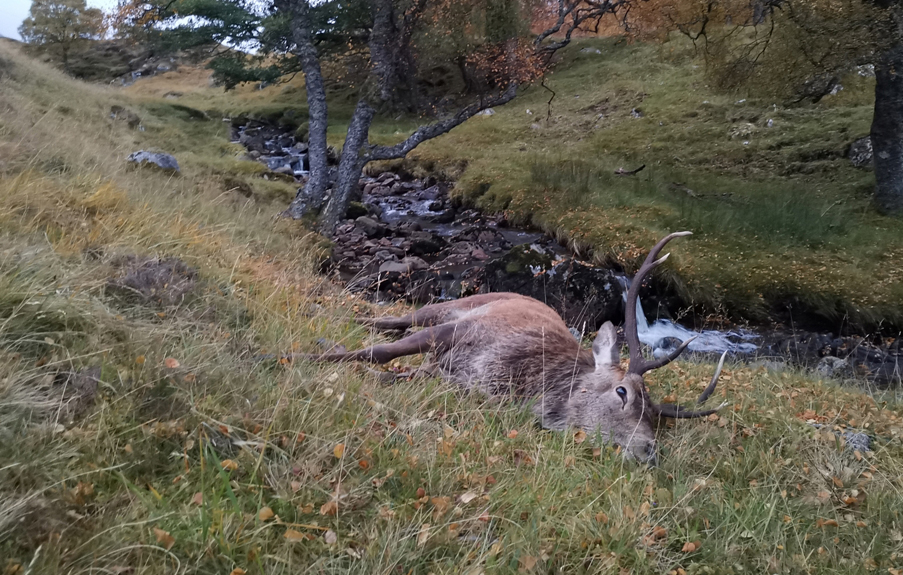
The Wildlife benefits from stalking
Afterwards, the stag was gralloched. Richard attached the drag ropes and pulled the beast across the narrowest part of the burn. Then dug his heels in to haul the 13 stone/83 kg up the steep banking. After each stalk, the gralloch is left behind to be eaten by ravens, and eagles. The ravens are typically first to arrive to help themselves. We walked back down to the house to collect the truck. But we left the drag ropes placed on top of the stag. The ropes deterred the ravens from helping themselves. The fresh meat destined for the larder and collected by the game dealer. Usually Richard would leave the spent cartridge on the carcass. But I had it in my pocket as a memento of my first and last Corrievarkie red stag. My stag was number 30, the last one of the 2020 managed cull.
Ravens
As we walked back down to the cottage overlooking the loch to pick up the truck, the clouds closed in. Our attention was drawn upwards by the sounds of two ravens. They croaked and cawed to each other as the flew towards the gralloch.
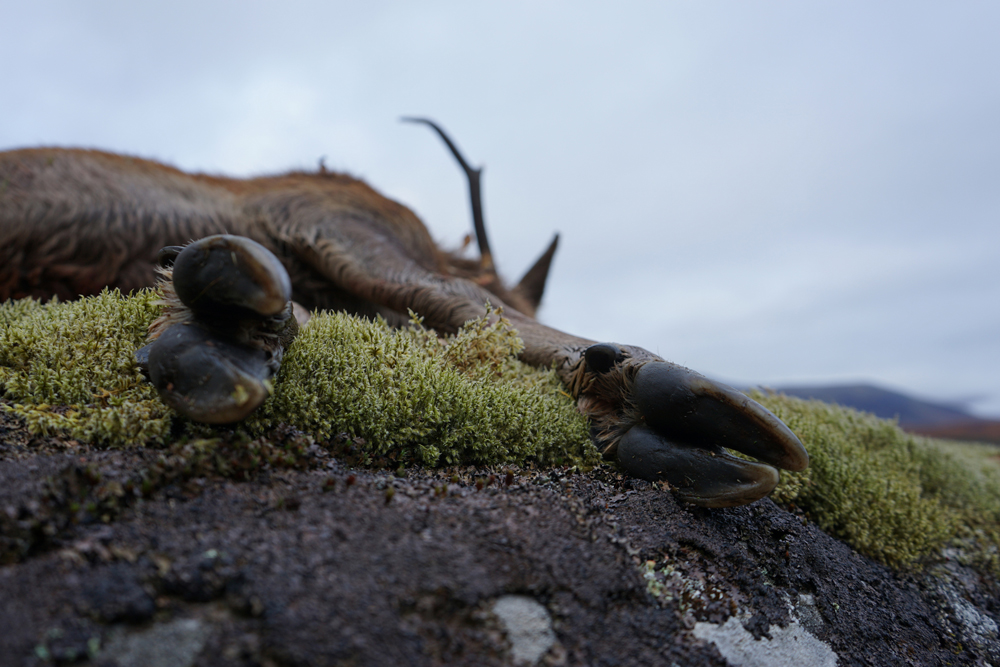
Stag Stalking in remote Scotland
Stag stalking in remote Scotland is a privilege. Deer stalking is a tradition that’s been carried out in the hills of Scotland for centuries. If you are curious to learn more or give it a try. Find an estate offering deer stalking for stags or hinds. It is an incredible experience to be out in the hills to stalk deer. The key is stalking with an experienced stalker who calmly guides you in close to shoot. The stag is unaware of human presence. The shot is taken with accuracy and respect under the close watch of the stalker. It is instant death. There is no suffering, and the freshly harvested meat goes into the food chain. The gralloch disappears within hours, devoured by ravens, eagles and foxes.
There is much more to stalking deer than pulling the trigger.”
